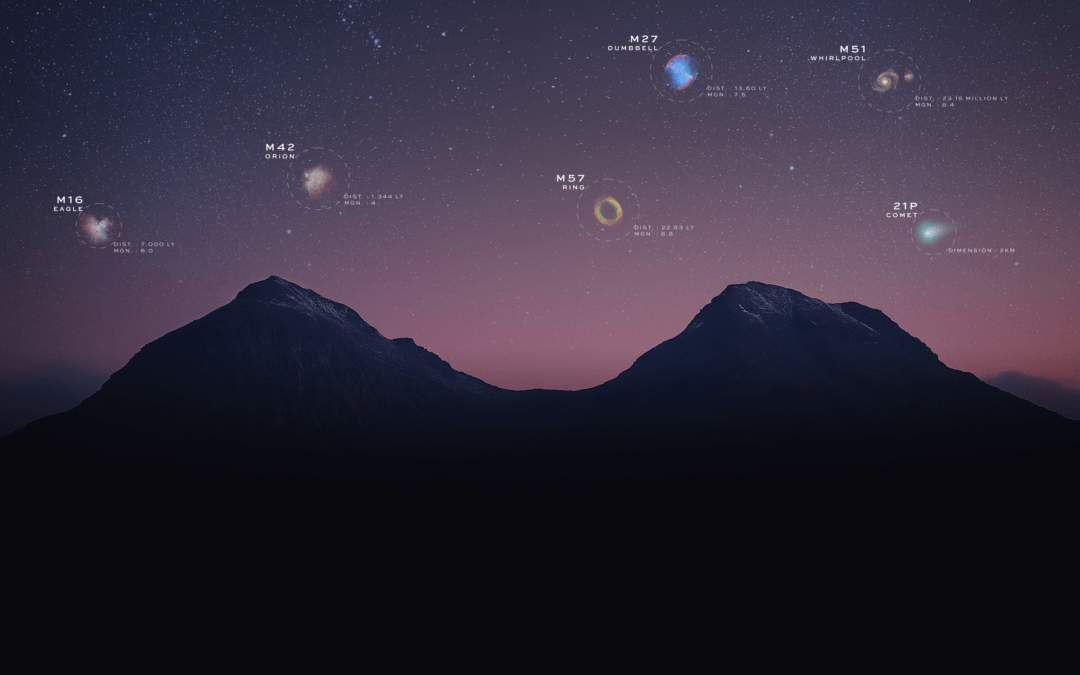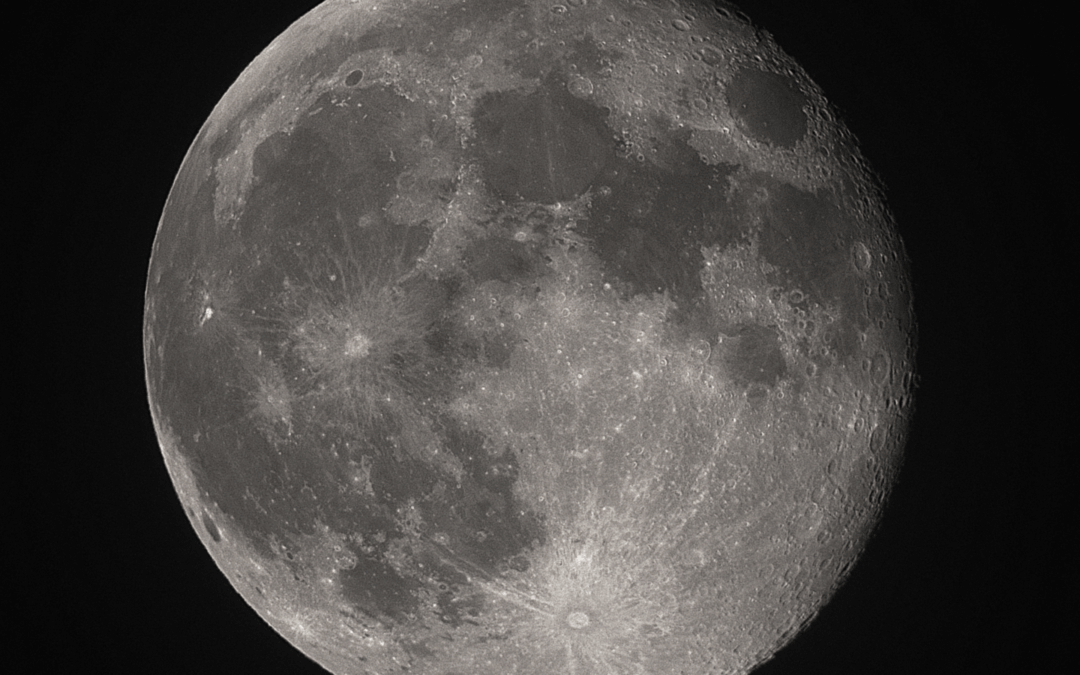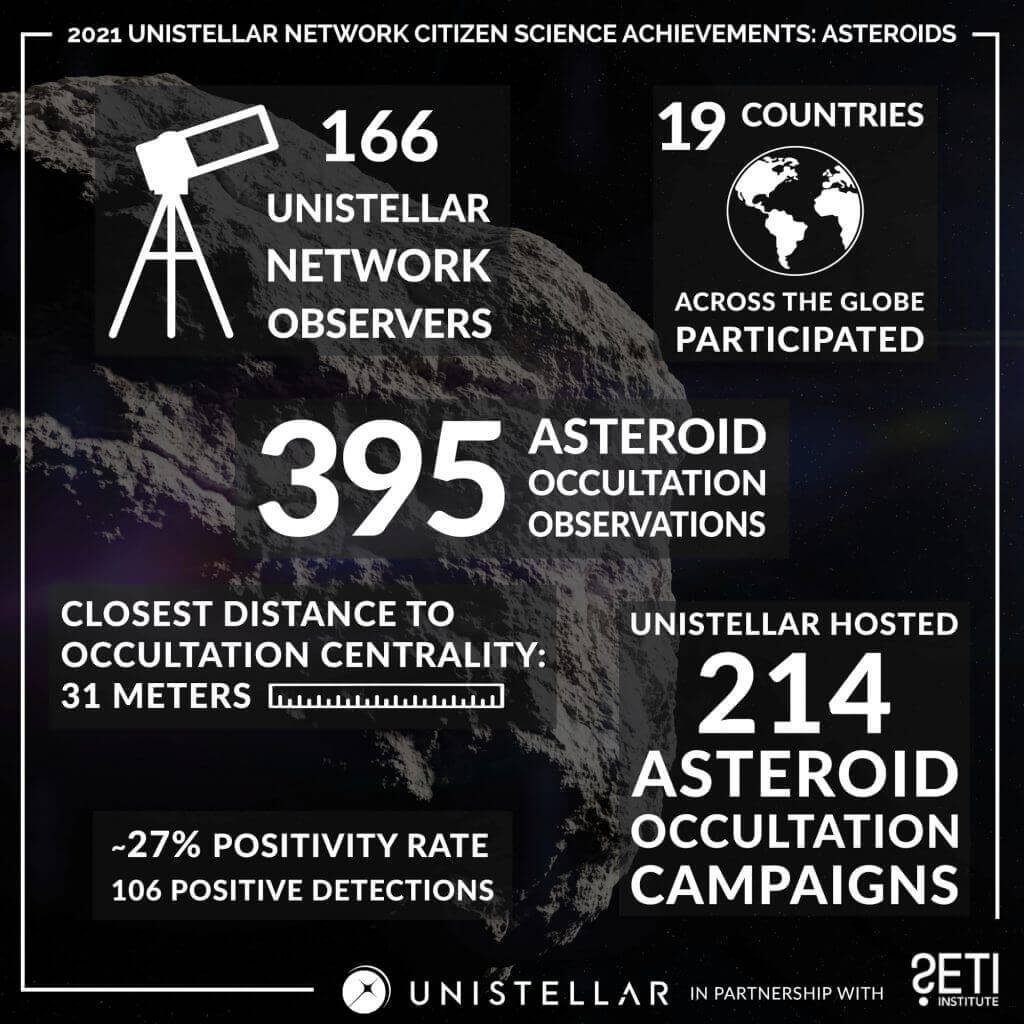
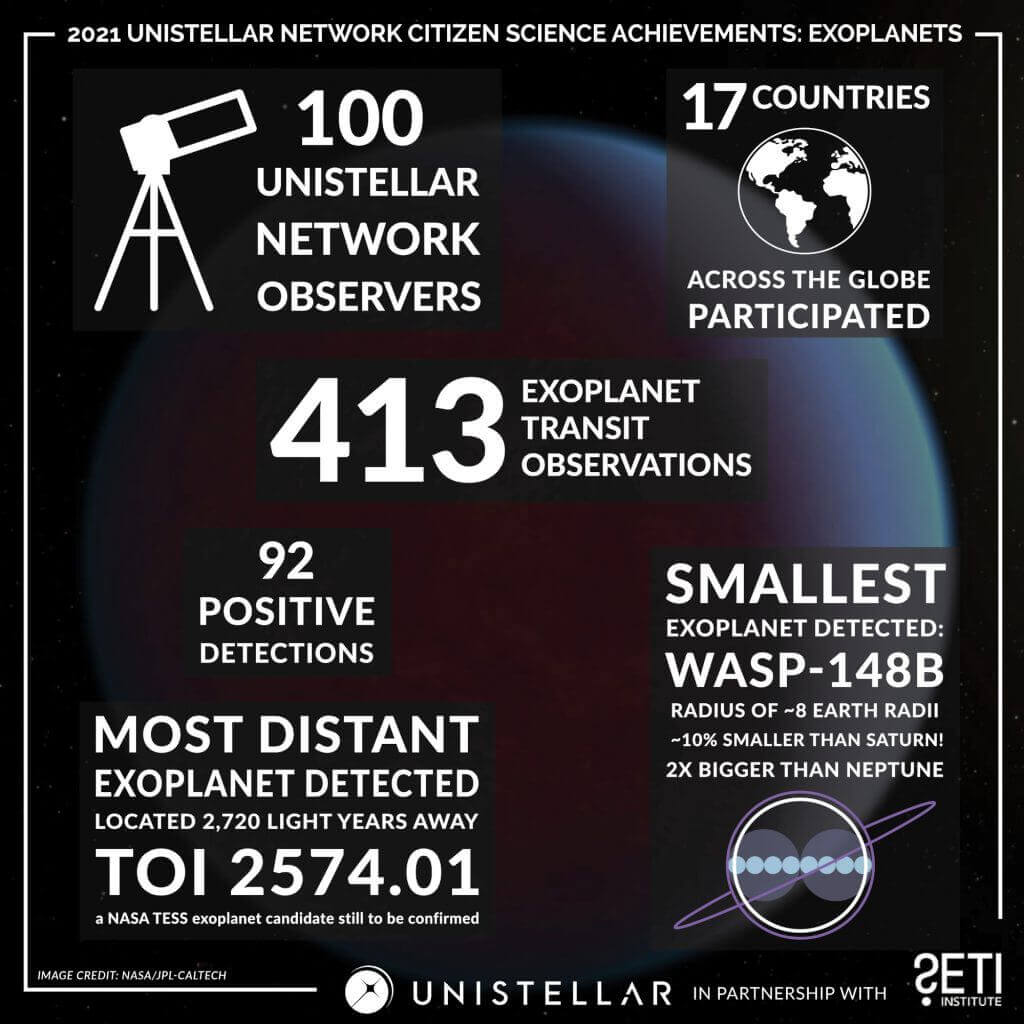
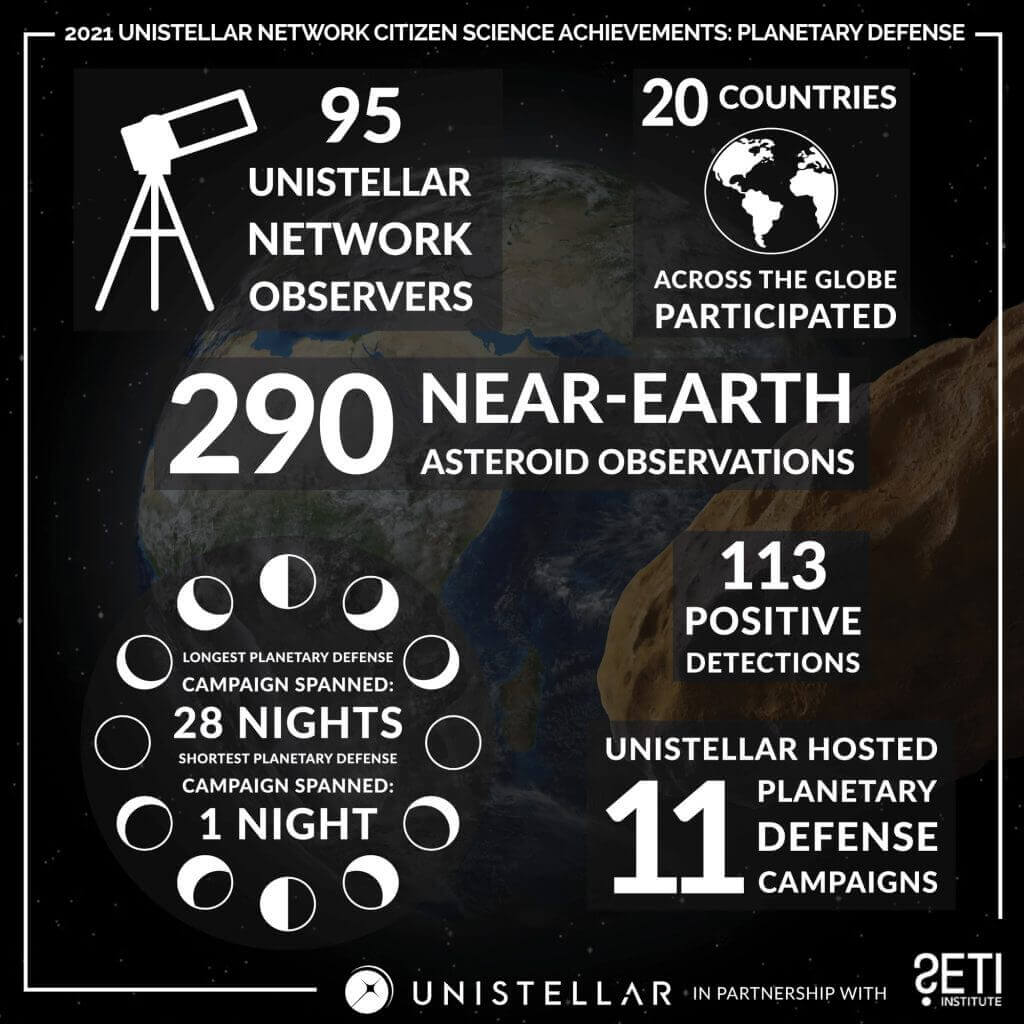
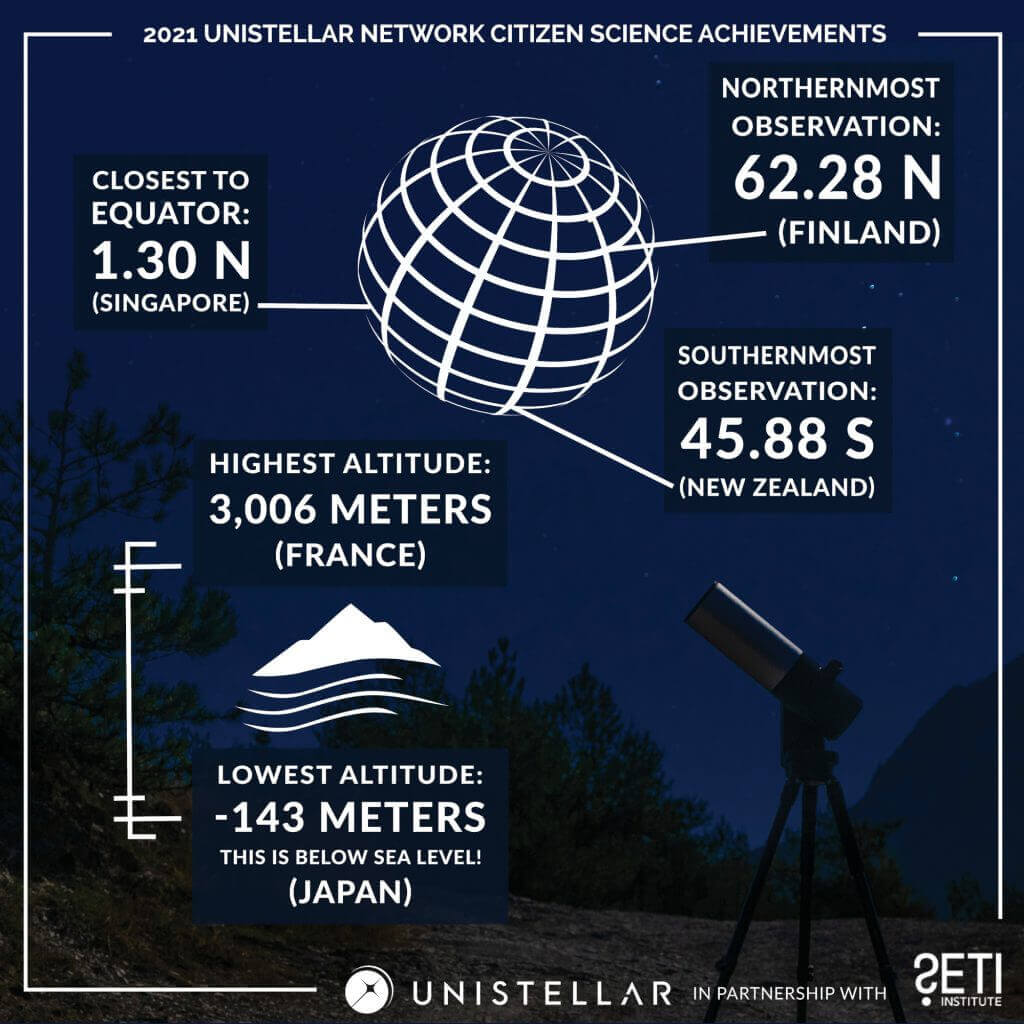
2021 Unistellar Network Citizen Science Achievements
The Unistellar Network has a lot to be proud of as we look back on 2021. Our citizen scientists and their eVscopes have made hundreds of contributions to astronomy over the course of last year, detecting asteroids near Earth and as far away as Jupiter’s orbit, exoplanets across our galaxy, satellites, and even a space telescope! The amazing work of the community, made in collaboration with our scientific partner the SETI Institute, is a testament to their passion for space, dedication to this endeavor, and the usefulness of citizen science to the astronomy community at large.
Along the way, Unistellar Network members racked up some impressive stats in 2021. For instance, they achieved hundreds of positive detections! All told, in 2021 our members made 395 observations of asteroids and 413 observations of exoplanets, including one exoplanet more than 2,700 light-years away. Unistellar hosted 11 Planetary Defense campaigns to observe and better understand nearby asteroids that may pose a threat to our planet, resulting in 113 positive detections of near-Earth asteroids (NEAs).
Unistellar members also took their eVscopes to locations far and wide this year. We saw observations from as far north as Finland and as far south as New Zealand, and at altitudes from 143 meters below sea level to more than 3,000 meters above it!
As we move into 2022, it’s sure to be another exciting year for citizen astronomy. Keep checking back for more news about upcoming observation campaigns!
Top Citizen Science Campaigns of 2021
On May 9, the shadow of the Trojan asteroid Patroclus swept across the continental US, and members of the Unistellar community were there to observe it. Patroclus is especially interesting to scientists because it’s one of the targets for NASA’s Lucy mission, which launched in October of 2021 to study the Trojans. With better data on Patroclus, thanks in part to citizen science observations, the Lucy spacecraft will be able to fly by this never-before-visited asteroid more confidently.
In recognition of their contributions, Unistellar citizen scientists were invited to attend the launch, where they met up with members of the Unistellar team to watch the Lucy spacecraft soar above the clouds and into orbit.
Two Unistellar observers celebrated a very different kind of observation over the summer. Unistellar Ambassadors Bruno Guillet and Justus Randolph pulled off a unique feat in November of 2020 as they tag-teamed a cross-Atlantic observation of an exoplanet transit. With their data, Unistellar scientists were able to stitch together the observations into a single lightcurve that validated the detection of exoplanet candidate TOI 2031.01 in June of last year. Bruno and Justus also presented their observations in a poster for the AAVSO annual meeting later in November 2021.
2021 also saw Unistellar’s largest citizen science campaign yet. Between November 18 and 20, 30 Unistellar members around the world teamed up to watch the transit of Kepler-167e — the first time the exoplanet’s entire star-crossing had ever been seen from the ground. For a span of 42 hours, the longest continuous transit observation ever attempted from Earth, Unistellar citizen astronomers kept their eyes on the Jupiter-sized exoplanet, making a total of 43 observations.
Late in the year, the Unistellar Network also commemorated the launch of JWST with an observing campaign to spot the space telescope as it made its way beyond Earth orbit to the second Lagrangian point. With the help of our new Moving Target Ephemerides tool, numerous Unistellar observers all over the world were able to watch along with astronomers as they nervously tracked the $10 billion telescope’s journey.
Citizen Astronomer Champions
Unistellar observers around the world played a big role in citizen astronomy this year, volunteering hundreds of hours as they found and tracked asteroids, exoplanets and more in the night sky. Many achievements were made across the Unistellar Network, and we want to highlight a few superlative accomplishments from our community.
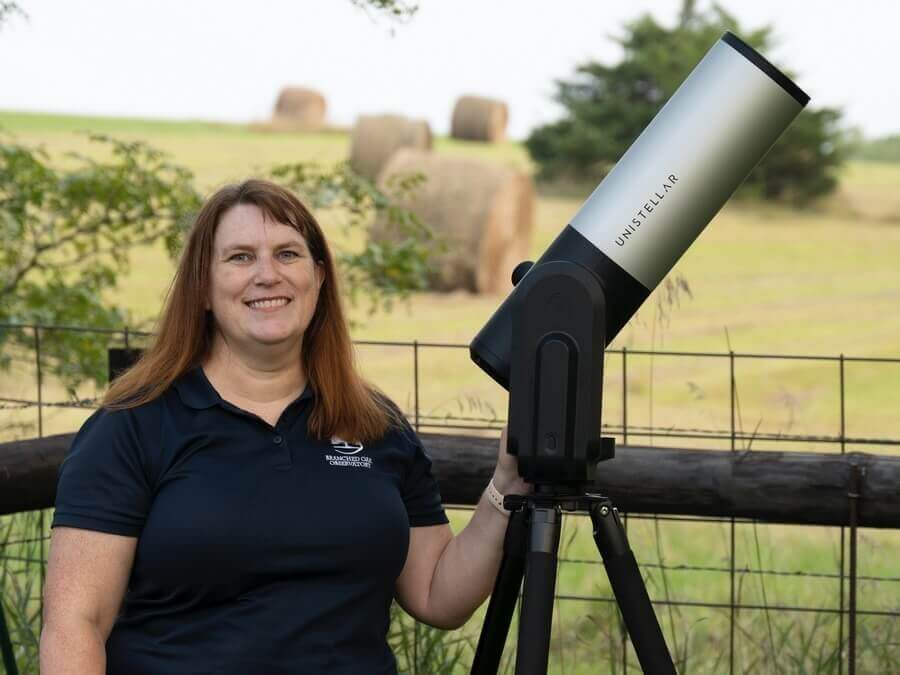
Kendra Sibbernsen, Physics and Astronomy instructor at the Metropolitan Community College (Nebraska, USA), was the first instructor from a network of community colleges to make a successful detection as a Unistellar citizen astronomer! In November 2021, Kendra positively detected main-belt asteroid Itha.
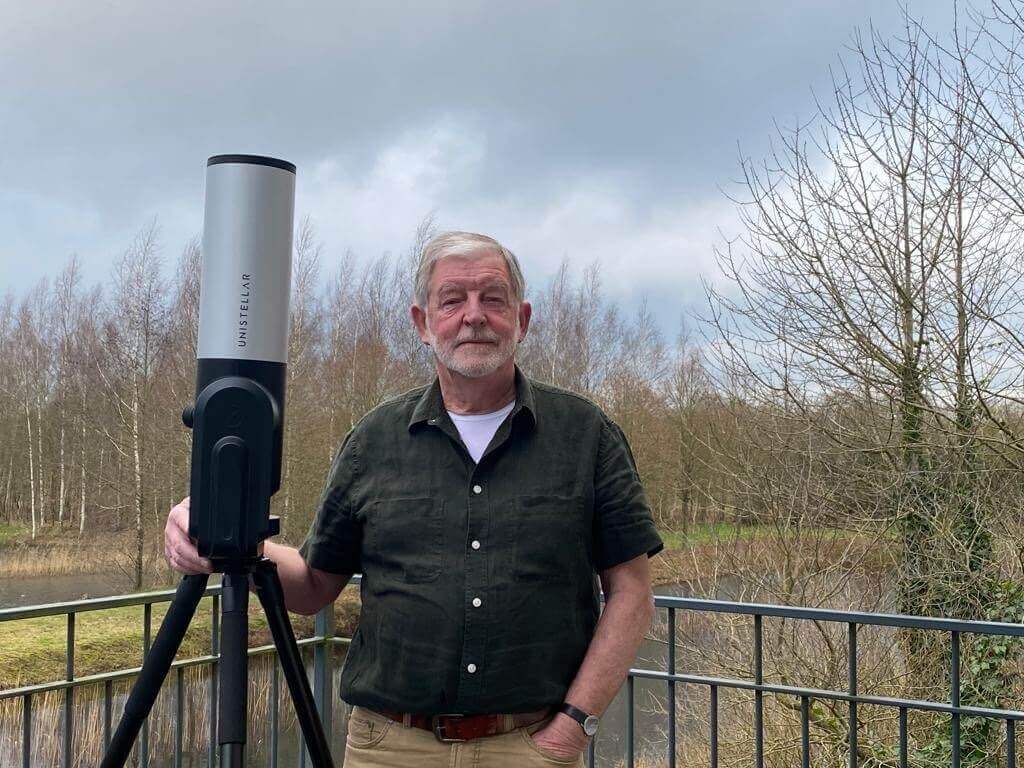
Adrianus Verveen, from the Netherlands, participated in the most asteroid occultations of any Unistellar Network member. All told, Verveen set out to observe 24 separate asteroids pass in front of a star!
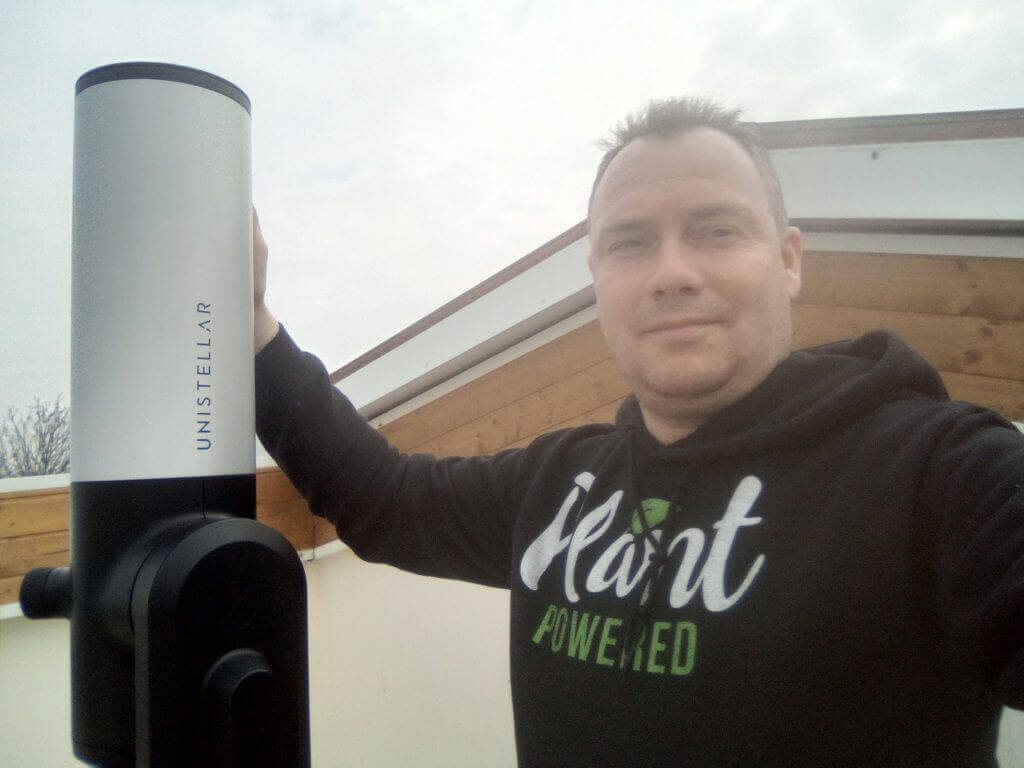
Nicola Meneghelli of Italy took the prize for the most distant exoplanet candidate, with an observation of TOI 2574.01. Discovered by NASA’s TESS mission, this exoplanet candidate is a whopping 2,720 light-years away!
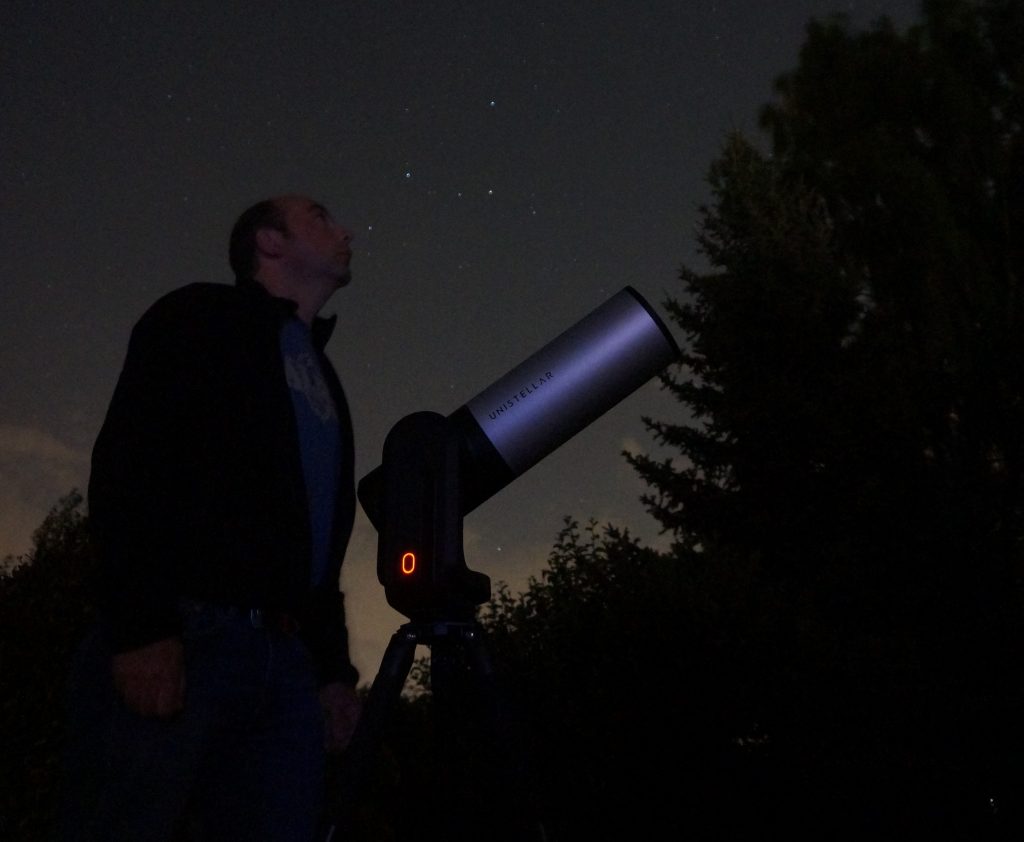
Bruno Guillet, a Unistellar Ambassador from France, submitted 71 exoplanet transit observations this year. That’s more than one distant world viewed per week!
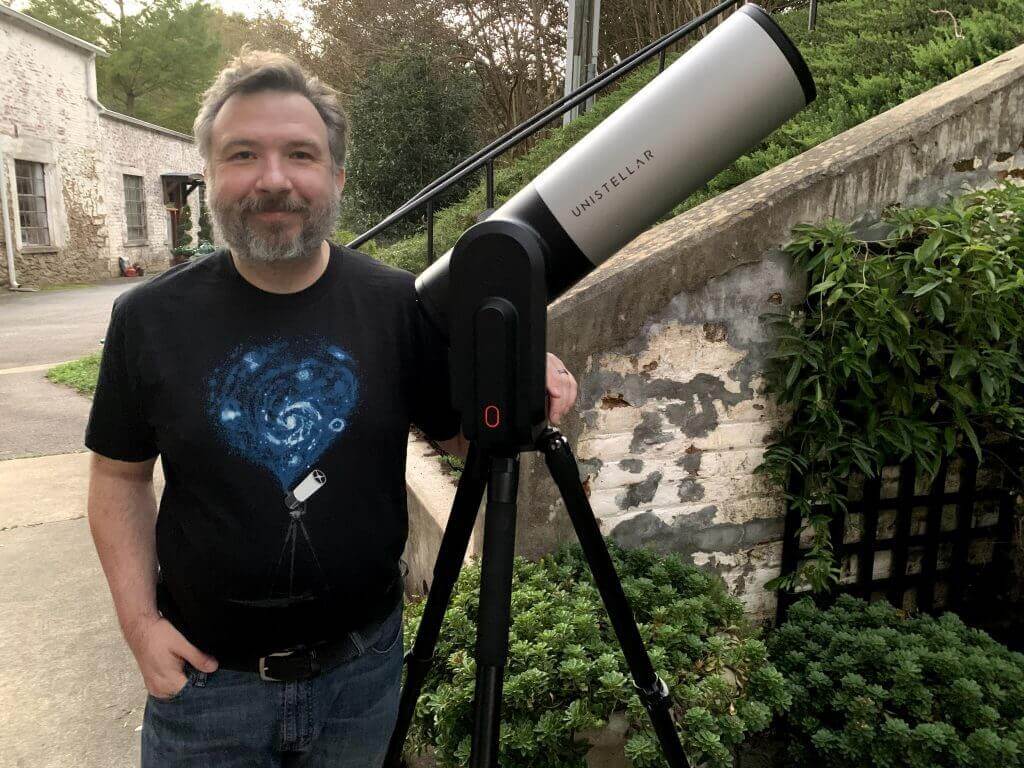
Justus Randolph, deserves a big thank-you from all citizens of Earth, after making 26 Planetary Defense observations this year, the most of any Unistellar Network member. The US-based Unistellar Ambassador was joined by dozens of others as he participated in Planetary Defense campaigns throughout the year.
Further readings
3 Reasons to observe this month
Every month, discover three unmissable celestial events to observe with your Unistellar telescope.
Observing Eclipses on Jupiter: Cosmic Spectacles Through a Telescope
The latest Unistellar App Update, version V3.0, is now live. Explore a smooth stargazing experience !
Unistellar Community Included In Multiple Scientific Papers
Did you know Unistellar Citizen Astronomers are often cited in published scientific papers? Find out how you can contribute too!
What Are the Names of All the Full Moons in 2024?
Discover the enchanting names of the full moons in 2024. Delve into the unique character of each lunar spectacle and embrace the allure of the night sky.
New Unistellar App Update: Version 3.0
The latest Unistellar App Update, version V3.0, is now live. Explore a smooth stargazing experience !
What to Observe This November: Open Star Clusters and More
These Halloween deep-sky objects will add some light to those dark, spooky nights. Treats, tricks, and telescopes await!

